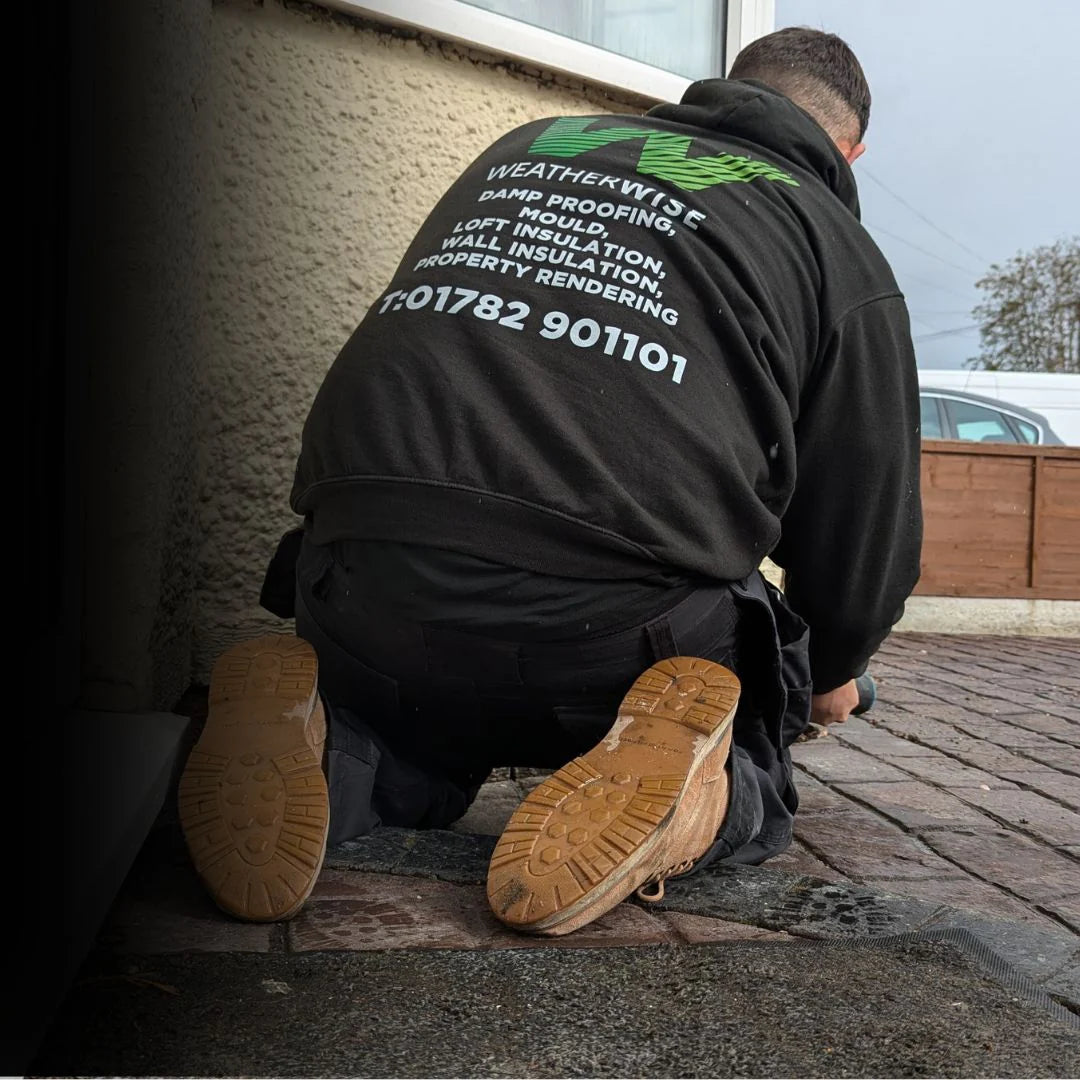Flooding remains one of the most devastating natural disasters affecting properties across the United Kingdom, with Stoke-on-Trent and surrounding Staffordshire areas particularly vulnerable due to their proximity to the River Trent and its tributaries. When water infiltrates homes and businesses, swift and professional emergency response becomes critical to minimising long-term damage and protecting public health.
This guide explores the essential steps and considerations when addressing flood damage in Stoke-on-Trent properties.
Understanding Flood Risks in Stoke-on-Trent
Stoke-on-Trent's geographical position makes it susceptible to various flooding types, including riverine flooding, surface water accumulation, and groundwater seepage. According to the Environment Agency, approximately 5,400 properties in Stoke-on-Trent face medium to high flood risk, with climate change projected to increase this vulnerability by 35% by 2050.
The city's historical clay soil composition, extensive urban development, and aging drainage infrastructure further compound these risks. Recent years have witnessed significant flooding events affecting areas like Hanley, Fenton, and low-lying parts of Longton, highlighting the need for robust emergency response protocols.
Immediate Actions Following Flood Damage
When floodwaters recede, property owners face a critical window for effective intervention. The first 24-48 hours after flooding are crucial for preventing secondary damage and beginning the restoration process:
Safety Assessment
Before entering any flood-damaged property, conduct a thorough safety evaluation:
- Ensure electrical systems are deactivated to prevent shock hazards
- Check for structural compromise including sagging ceilings or floors
- Wear appropriate personal protective equipment (PPE) including waterproof boots, gloves, and respiratory protection
- Be alert for contaminated water that may contain sewage, chemicals, or biological hazards
Research published in the Water Security (2023) indicates that floodwater contamination levels in urban areas like Stoke-on-Trent typically contain 6-10 times the safe bacterial load for human exposure, underscoring the importance of proper protection.
Water Extraction and Removal

Rapid water removal constitutes the foundation of effective flood damage restoration:
- Professional-grade submersible pumps efficiently remove standing water
- Industrial wet vacuums address residual moisture
- Strategic placement of air movers accelerates initial drying
- Dehumidification equipment reduces ambient moisture levels
The British Standards Institution guidelines recommend complete standing water removal within 24 hours to minimise microbial growth potential and structural saturation.
Professional Water Damage Assessment
Following initial emergency response, comprehensive damage evaluation becomes essential:
Moisture Mapping and Documentation
Professional restoration specialists employ advanced moisture detection technologies:
- Thermal imaging cameras identify hidden moisture pockets behind walls and under flooring
- Moisture meters quantify saturation levels in different materials
- Hygrometers monitor ambient humidity during the drying process
- Digital documentation creates detailed records for insurance purposes
A study from the Building Research Establishment (BRE) demonstrates that proper moisture mapping reduces overall restoration time by approximately 40% and improves outcomes by identifying concealed damage early.
Contamination Classification
Flood damage requires categorisation based on water contamination levels:
- Category 1: Clean water from broken supply lines or rainwater
- Category 2: "Grey water" containing minor contamination from appliances or overflows
- Category 3: "Black water" containing sewage, chemicals, or flood water from rivers
In Stoke-on-Trent, Environment Agency data indicates that 62% of flood incidents involve Category 3 water, necessitating enhanced disinfection protocols and more extensive material removal compared to other water damage scenarios.
Professional Drying and Dehumidification
Structural drying represents the most technically complex aspect of flood restoration:
Strategic Drying Approaches
Effective drying requires a scientific approach tailored to specific building materials and conditions:
- Evaporative drying utilises air movement to accelerate moisture evaporation
- Desiccant dehumidification effectively addresses lower temperatures common in Stoke-on-Trent properties
- Refrigerant dehumidification proves efficient for warmer environments
- Heat drying systems accelerate moisture release from dense materials
Moisture Level Monitoring

Throughout the drying process, continuous monitoring ensures effectiveness:
- Daily moisture readings track progress toward target levels
- Adjustments to equipment placement optimise drying efficiency
- Temperature and humidity monitoring prevents conditions conducive to mould growth
- Documentation supports insurance claims and verifies restoration completeness
Mould Prevention and Remediation
Flood-damaged properties face significant mould risk, particularly in Stoke-on-Trent's often humid climate:
Early Intervention
The UK Centre for Moisture in Buildings reports that visible mould can develop within 24-48 hours of flooding in optimal conditions, with spore counts reaching hazardous levels within 72 hours.
Early intervention strategies include:
- Application of EPA-registered antimicrobial treatments
- HEPA filtration to capture airborne spores
- Removal of irreparably contaminated porous materials
- Containment measures preventing cross-contamination
Long-Term Prevention
Implementing post-restoration mould prevention measures provides ongoing protection:
- Moisture-resistant building materials for repairs
- Proper ventilation system restoration and cleaning
- Application of mould-inhibiting primers before repainting
- Education on humidity control for property owners
Content and Materials Salvage
Not all flood-damaged belongings require disposal. Professional restoration services evaluate salvageability based on:
Remediation Potential Assessment
- Material composition and porosity influence remediation potential
- Contamination type and duration determine salvage protocols
- Replacement cost versus restoration cost analysis guides decisions
- Sentimental value considerations balance technical and emotional factors
The Institute of Inspection, Cleaning and Restoration Certification (IICRC) guidelines provide standardised frameworks for content evaluation following water damage, offering property owners in Stoke-on-Trent clear expectations regarding salvageability.
Insurance and Documentation

Proper documentation proves vital for successful insurance claims:
Evidence Collection
- Before-and-after photographic documentation
- Detailed moisture mapping records
- Third-party professional damage assessment reports
- Itemised inventory of damaged contents
- Restoration service documentation and invoicing
Flood Resilience Improvements
Post-restoration presents an opportunity to enhance property resilience against future flooding:
Structural Modifications
- Installation of flood barriers and defensive measures
- Elevation of electrical systems above flood risk levels
- Implementation of flood-resistant flooring materials
- Consideration of sump pump systems with battery backups
The UK Government's Flood Resilience Grant scheme provides funding support for qualifying Stoke-on-Trent properties implementing approved resilience measures, covering up to £5,000 of improvement costs in designated risk areas.
Contact WeatherWise UK for Stoke-on-Trent Flood Damage Restoration
When flooding strikes your Stoke-on-Trent property, every minute counts. Our local team of certified water damage restoration specialists provides 24/7 emergency response throughout Staffordshire, with guaranteed arrival within 60 minutes of your call.
WeatherWise UK combines advanced moisture detection technology, industrial-grade equipment, and decades of local experience to deliver comprehensive flood damage restoration services tailored to Stoke-on-Trent's unique property characteristics and challenges.
Contact WeatherWise UK today at +44 1782 491331 to schedule an immediate assessment or learn more about our preventative services for properties in flood-prone areas.



